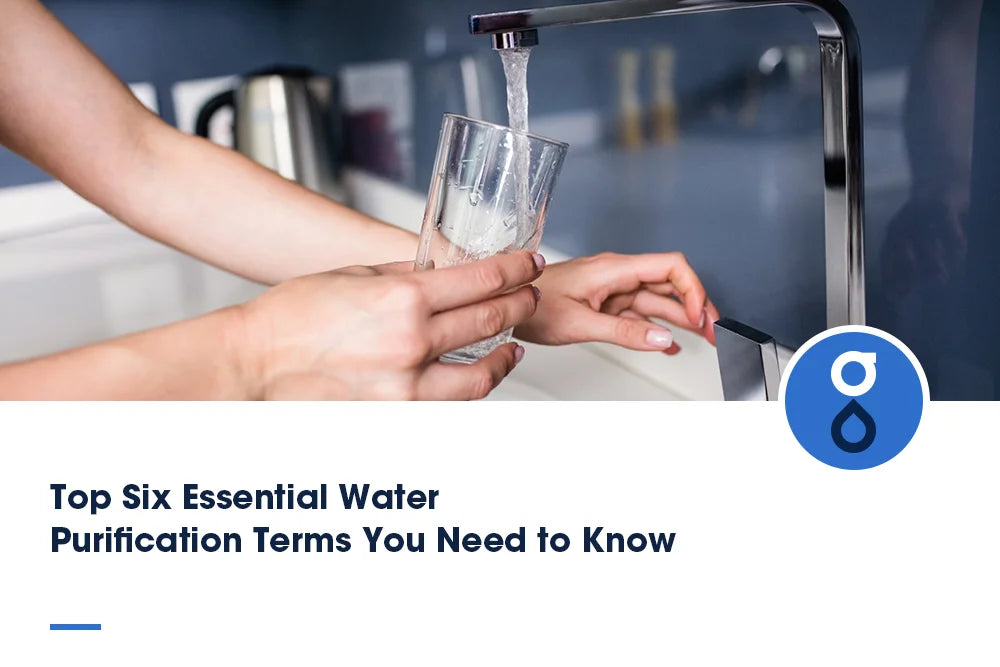Table of Contents:
Reverse osmosis: purifying water at its molecular level
Disinfection: killing harmful microorganisms
Distillation: removing impurities through evaporation
Biofouling: Preventing biological buildup
Filtration: straining out contaminants
Membrane scaling: dealing with mineral deposits
Conclusion
When it comes to ensuring the purity of your drinking water, familiarity with key water purification terms is essential. Each term is vital in maintaining water quality, from reverse osmosis to filtration. Understanding these terms empowers you to make informed decisions and helps safeguard your health and well-being. So, let's delve into the world of water purification and uncover the knowledge that can make a significant difference in your daily life.
Reverse osmosis: purifying water at its molecular level

When purifying water at its molecular level, reverse osmosis system is a highly effective method. One of the key benefits of reverse osmosis is its ability to remove contaminants such as lead, chlorine, and bacteria, providing you with clean and safe drinking water.
Unlike other purification methods like carbon filtration, reverse osmosis can filter out even the smallest particles, ensuring a higher purity. However, proper maintenance is crucial to maintaining its efficiency. Regularly changing filters and ensuring the system is well-maintained is essential for optimal performance.
There are some common misconceptions about reverse osmosis, such as it removes all minerals from water. While it removes some minerals, it also eliminates harmful substances, improving water quality and taste.
Disinfection: killing harmful microorganisms
To effectively ensure that harmful microorganisms are eliminated, disinfection is crucial. There are various methods to achieve this, each with unique advantages and applications. Here are some common techniques for disinfecting water:

These methods effectively disinfect water and ensure it is safe for consumption. Remember to choose the appropriate disinfection method based on the specific contaminants present in the water source. By understanding these disinfection techniques, you can make informed decisions on purifying your water best and safeguarding your health.
Distillation: removing impurities through evaporation

Distillation efficiently removes impurities from water through the process of evaporation. This method is highly effective in purifying water for consumption. Here are three key aspects of distillation you should know:
- Thermal desalination is an energy-efficient process that uses heat to separate water from impurities, particularly salt in seawater. This method is crucial for producing freshwater in regions facing water scarcity.
- Boiling method is a traditional purification technique in which water is heated until it evaporates, leaving impurities behind. The vapor is then condensed into liquid form, resulting in purified water.
- Vacuum distillation involves removing impurities at low pressure, making it helpful in purifying sensitive compounds or heat-sensitive substances.
In addition to these methods, solar stills harness sunlight to purify water, while multiple effect distillation systems enhance efficiency by utilizing heat exchange mechanisms.
Biofouling: Preventing biological buildup
Preventing biological buildup, specifically biofouling, is significant in maintaining water purification systems. Biological contamination can lead to reduced efficiency and potential health hazards. Implementing effective biofouling prevention measures is crucial to ensure the longevity and effectiveness of water treatment processes.
Maintenance strategies play a vital role in combating biofouling and preserving the integrity of the purification system. Anti-biofouling techniques help prevent the accumulation of organic matter, such as algae, bacteria, and fungi, which can clog filters and pipes, impacting the system's overall performance.

Filtration: straining out contaminants
Strain out contaminants effectively by utilizing various filtration methods in water purification systems. Filtration is crucial in removing impurities from water, ensuring it's safe for consumption. Here are three key methods commonly used for water filtration:
- Particle removal: This process involves physically trapping and removing particles such as sediment, dirt, and debris from the water, ensuring cleaner and clearer drinking water.
- Chemical treatment: Some filtration systems use chemical additives to treat water, effectively neutralizing harmful contaminants and pathogens present in the water.
- Activated carbon: Glass water filter pitchers are highly effective in adsorbing organic compounds, chemicals, and chlorine, improving the taste and odor of water.
Membrane scaling: dealing with mineral deposits
Implementing effective maintenance strategies is a key consideration in water purification systems to address membrane scaling, which involves dealing with mineral deposits. Chemical treatment is crucial in preventing scaling by controlling mineral buildup on the membranes.
Descaling processes are essential for removing mineral deposits that can hinder the purification process's efficiency. Utilizing anti-scaling solutions is vital for maintaining membrane efficiency and ensuring optimal performance.
Scaling prevention techniques not only help extend the lifespan of the membranes but also contribute to long-term cost savings. Regular membrane cleaning is necessary to remove mineral deposits and prevent scaling from compromising the purification process.
Conclusion
Now that you know the top six essential water purification terms, you can ensure your drinking water is safe and clean. Remember to regularly maintain and clean your purification system to keep it working effectively. Understanding these terms lets you decide on the best methods to purify water in your home or community. Stay informed and stay hydrated with clean, purified water.


















